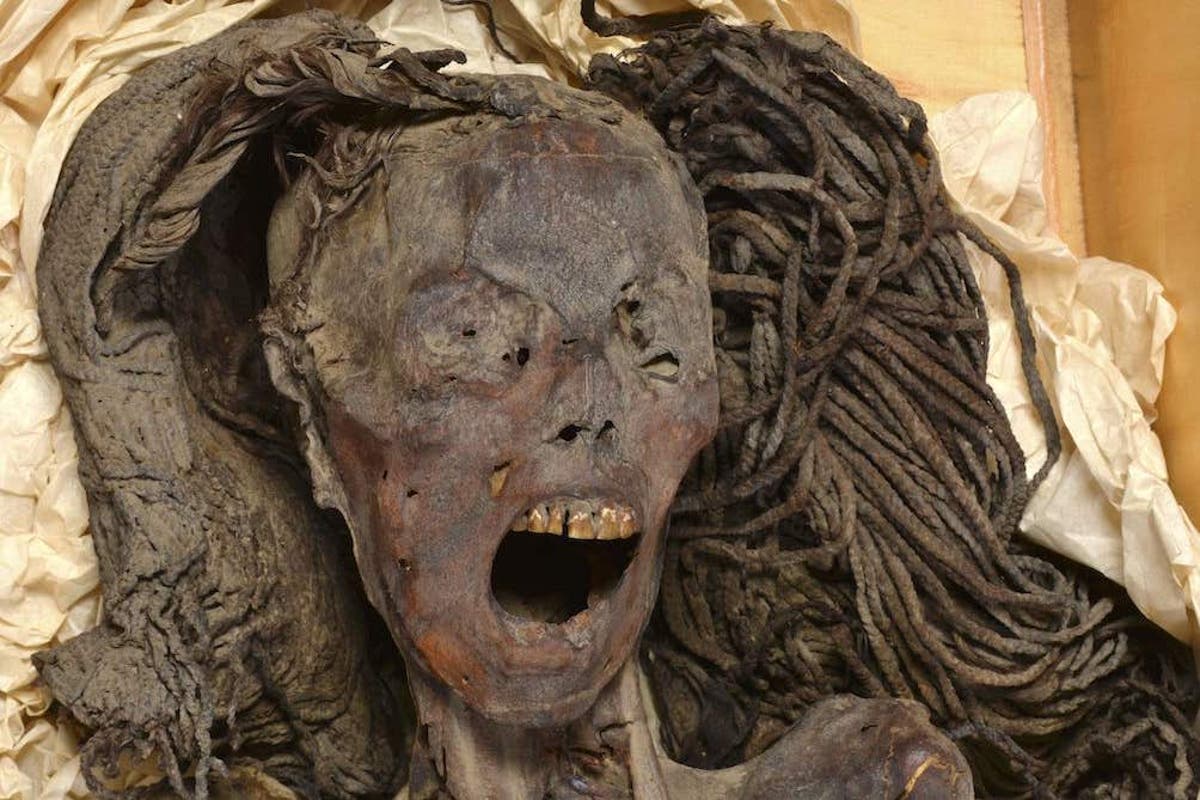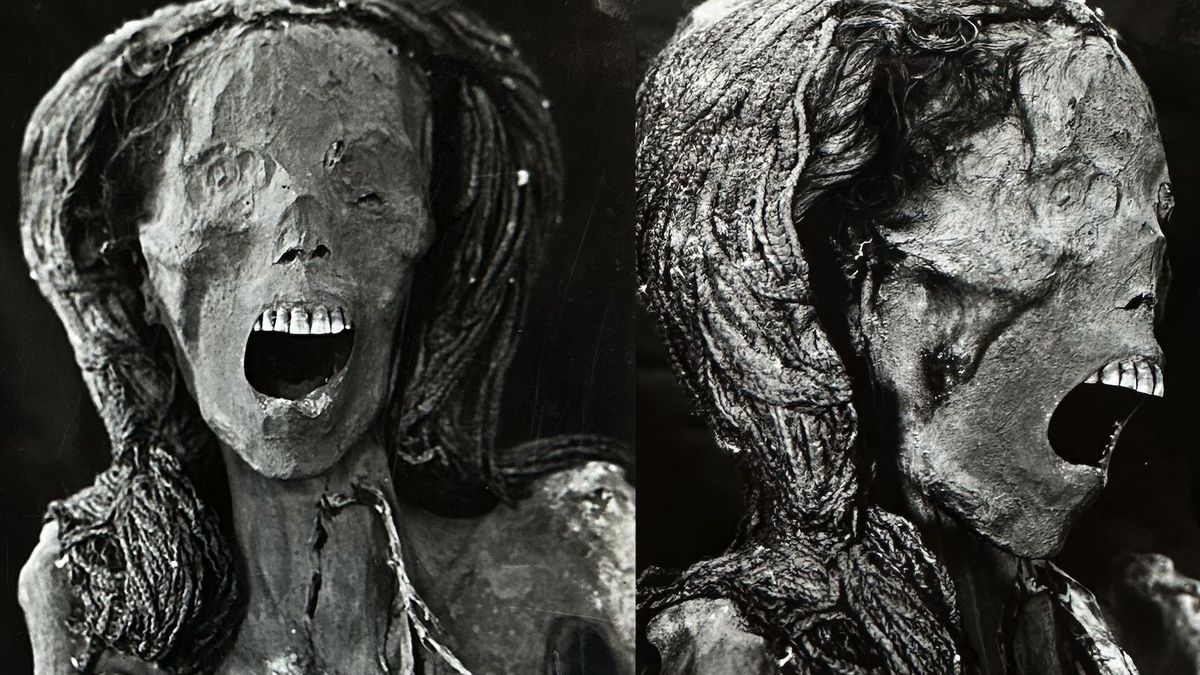In a study published in the journal Frontiers in Medicine, scientists have revealed new details about a Screaming Mummy, a mummified ancient Egyptian woman who is known for the world with her screaming expression. The mummy was discovered in 1935 near Luxor, Egypt, a rare glimpse into the life and death of a woman who lived over 3,500 years ago during the New Kingdom period of ancient Egypt.

Also Read: 19th Century Baltic Sea Shipwreck: A Treasure of Champagne and Mineral Water
The Screaming Mummy was often referred to as the “Screaming Woman” it was unearthed during an archaeological expedition led by the Metropolitan Museum of Art in New York City in 1935.
She was found in a tomb beneath the burial site of Senenmut, an architect and official in the court of Queen Hatshepsut (1479–1458 BC) suggesting a possible familial connection or association with figures of the time.
Upon discovery the Screaming Mummy was noted for her unusual open-mouthed expression, which gave her the nickname Screaming Woman.
Unlike typical mummies from the same era, where embalmers would secure the jaw to prevent the mouth from opening, her mouth was left wide open resembling a scream frozen in time.
Researchers employed CT scans and infrared imaging to perform a virtual dissection of the Screaming Mummy. These techniques allowed scientists to examine the internal and external features of the Screaming Mummy without causing any damage.
The study revealed that the woman was approximately 48 years old at the time of her death. She stood at a height of 1.54 meters (just over 5 feet) consistent with the average stature of Egyptian women during her era.
Scans indicated the presence of mild arthritis in the spine with bone spurs on some vertebrae. Additionally, several teeth were missing, likely lost prior to death, which was a common occurrence in ancient populations due to dental wear and limited dental care.
The study found that the Screaming Mummy’s body was embalmed using lavish and costly materials such as frankincense and juniper resin.
These substances were typically reserved for high-status individuals, suggesting she held a huge position in society or had access to wealth.
Contrary to the traditional mummification practices of the New Kingdom period, where internal organs (except the heart) were removed and preserved separately, the researchers noted that her organs, including the brain, diaphragm, heart, lungs, liver, spleen, kidneys and intestines were left intact.
The Screaming Mummy was found adorned with a wig made of long, dark brown braids intertwined with her natural hair and two scarab rings were placed on her body.
One of the most compelling theories proposed by researchers is the concept of cadaveric spasm. This rare phenomenon involves the sudden contraction of muscles at the moment of death often associated with violent or traumatic deaths.
The open mouth could have been preserved due to this instantaneous rigor mortis, implying that the woman may have died in agony or extreme pain.
The study also explored other possibilities such as the rate of desiccation (drying out), decomposition processes or the compressive force of the Screaming Mummy’s wrappings contributing to the facial expression.
Also Read: Stegosaurus Skeleton Apex Sells for $44.6 Million at Sotheby’s Auction
The burial site dates back to the 18th Dynasty, a period known for its extensive developments in architecture, art and culture. Senenmut was a influential figure in Egyptian history, serving Queen Hatshepsut.
The Screaming Mummy was adorned with two scarab rings made of silver and gold and she wore a wig made from braided date palm fibers.
The primary theory proposed by Dr. Sahar Saleem and Dr. Samia El-Merghani suggests that the open mouth could be a result of cadaveric spasm, a rare condition where muscles contract intensely at the moment of death and remain rigid.
This condition is often associated with sudden or violent deaths such as those caused by extreme stress, physical trauma or severe pain.
Another theory posits that the mouth may have naturally opened due to the relaxation of the muscles after death.
The embalmers may have been unable or unwilling to close it, preserving her face in this startling expression.
Not all researchers are convinced by the cadaveric spasm explanation. Some suggest that the open mouth could be due to postmortem processes rather than a spasm.
Dr. Stuart Hamilton, a forensic pathologist argues that a simpler explanation could be that the mouth fell open naturally and stayed that way.
In ancient Egyptian culture, the Opening of the Mouth ceremony was a ritual intended to restore the senses of the deceased in the afterlife. This practice might have influenced how the mummy was preserved.
Researchers employed computerized tomography (CT) scanning to perform a virtual autopsy on the Screaming Mummy, allowing them to study her remains without physical intrusion.
High-resolution analysis including scanning electron microscopy and X-ray diffraction was used to analyze the wig, hair and embalming materials.
The CT scans revealed that the Screaming Woman had mild arthritis including in her spine and was missing several teeth, possibly lost before death.
Surprisingly her brain, heart, lungs, liver, spleen, kidneys and intestines were intact, contrary to typical mummification practices of the time, which usually involved organ removal.
Also Read: Peru: Archaeologists Discovered 4,000-Year-Old Temple and Theater




